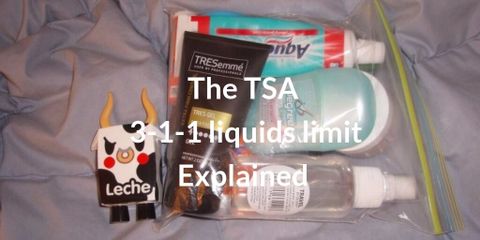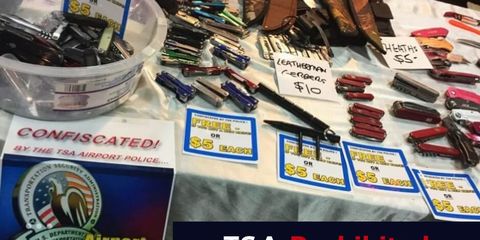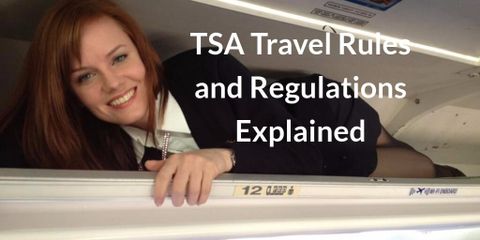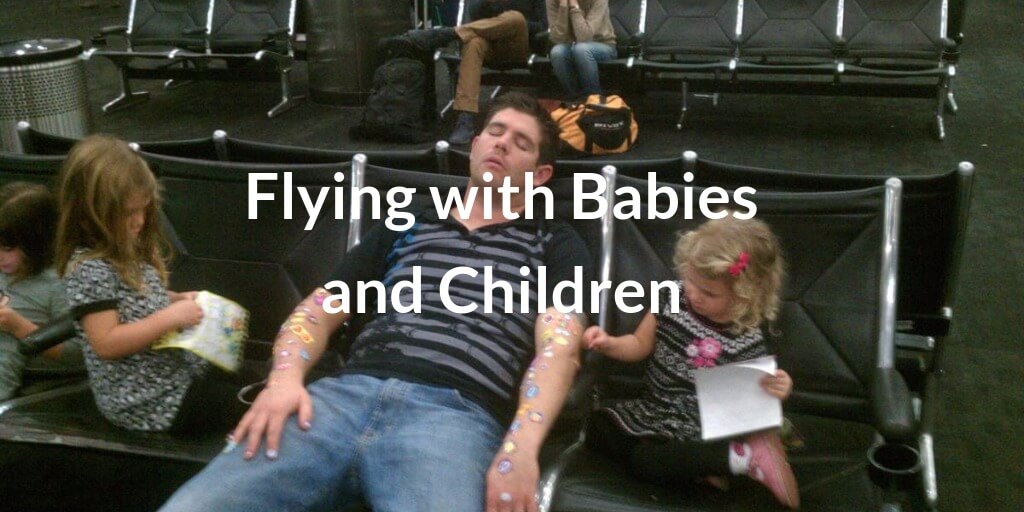
Trouble Free Flying - TSA Rules for Traveling With an Infant or Small Child
There’s only one thing worse than sitting next to a screaming baby on your flight, and that’s being the parent of that baby!
Preparing to travel with a baby or small child can be very stressful, with the biggest concern often is trying to keep the child awake for hours before you fly and then praying that he or she will sleep all the way! So, let’s not add to the stress by being confused about what the airport or airline rules are for babies and children.
How does the TSA deal with infants, toddlers, and children?
The TSA defines an
- “infant” as a child who must be carried through the screening process;
- “toddler” can walk through while holding someone’s hand;
- “Children” are classified as below 12 years and older than 12 years;
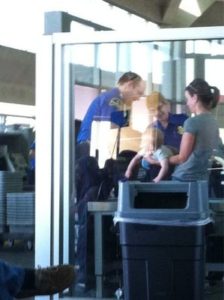 There are some differences in the way airports and airlines treat children, based on these definitions.
There are some differences in the way airports and airlines treat children, based on these definitions.
For example, children from age 13 must go through all the same screening steps as adults. Children younger than 12 may walk through the X-ray metal detector on their own, and if they set off the alarm they may go through again several times to avoid a pat down procedure.
The same rules apply if advanced imaging technology is used at the airport. Children under 12 are also allowed to keep their shoes, jackets and even hats on.
Advanced imaging can be used for a small child who is able to stand alone for 5 seconds, but cannot be used for a child who is being carried. Children must be taken out of prams or strollers for screening – and the stroller must also be checked.
Alert the TSA officials if your child has a disability or has a medical device. You will be allowed to carry your child through the screening, and you will not be separated from your child. You can also for help if you need it. Contact the TSA Cares helpline before you travel to set this up.
All toys, blankets, bags must be placed on the X-ray belt to be screened. Remember to take items out of the pockets of strollers or baby carriers. Items that are too big for the belt will have a manual/visual check.
Exceptions to the 3-1-1 liquids rule for babies
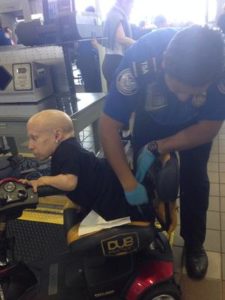 You can take extra liquids for babies, and they can be in containers larger than the 3 oz (100ml) rule that applies to everyone else. This means that you can take as much breast milk, formula, water, juice and baby food as your baby might need for the flight.
You can take extra liquids for babies, and they can be in containers larger than the 3 oz (100ml) rule that applies to everyone else. This means that you can take as much breast milk, formula, water, juice and baby food as your baby might need for the flight.
You can also carry gel teething rings and toys. Everything must be declared at the checkpoint, and should be in a plastic see-through bags – but you are not limited to one bag only.
All items will be screened. There is no evidence to suggest that any damage is done to these foods and drinks by X-raying them. You might also be asked to open bottles of baby food and to pour out some milk or juice for special screening. Take just enough for the flight and pack extra items in your checked baggage – otherwise, you might have unsealed bottles of food that will spoil before you can use them.
How many bags am I allowed if I am traveling with an infant or a child?
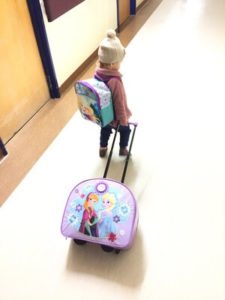 The number of bags and the weight you can check in depends on the specific rules of the airline and the class of travel you are paying for. The general rule for carry-on baggage is that you are allowed one bag that can fit under your seat or into the overhead storage bins – the maximum size is generally 22” x 14” x 9”.
The number of bags and the weight you can check in depends on the specific rules of the airline and the class of travel you are paying for. The general rule for carry-on baggage is that you are allowed one bag that can fit under your seat or into the overhead storage bins – the maximum size is generally 22” x 14” x 9”.
In addition, you can carry a personal messenger bag or computer bag, and a “special” item such as a raincoat or compact umbrella (or a few golf clubs!).
Children who have paid for a seat have the same limits as adults. Infants and toddlers up to the age of 2 years don’t have their own seats. They are generally allowed one checked in bag, plus one checked-in or carry-on stroller or car seat and a carry-on baby diaper bag.
Are there any special rules for traveling with infants and small children?
Some rules to be aware of include:
- If your baby is less than a week old, you might need a letter from your doctor giving permission for travel.
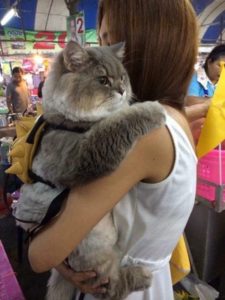 Children under 2 will sit on your lap and must be fastened with your seatbelt – an extension is usually available. If you want to buy a seat for a child under 2, you must also bring an approved safety seat with you. These are usually the same seats as you use in a motor car.
Children under 2 will sit on your lap and must be fastened with your seatbelt – an extension is usually available. If you want to buy a seat for a child under 2, you must also bring an approved safety seat with you. These are usually the same seats as you use in a motor car.- No child under 5 years will be allowed to travel unattended.
- Every child needs identification documents and, in some cases, may also need special letters of consent if not traveling with both parents. (Note that in some countries this requirement is particularly stringent – this is to prevent child trafficking. Check documentation requirements very carefully and don’t take any shortcuts.)
- Changing tables are generally available in airport toilets and on board the aircraft.
- Bassinets can sometimes be booked in advance – you generally also must pre-book the front row seats to use them.
- Strollers and car seats can be checked in or carried on, provided they weigh less than 20 lbs (9 kgs). I have found airline staff to be very helpful here – they take the stroller from you as you board, and have it waiting again as you come out of the plane.
Just as you might be a bit nervous or excited when you first travel, so are babies and children. However, they seem to get used to it very fast and, provided they are not hungry or overtired, they can be a pleasure to travel with!
Written By Kate Mark

Kate is a mid-lifer who quit a growing corporate career to reawaken her passions and her lifelong dream of traveling the world.
